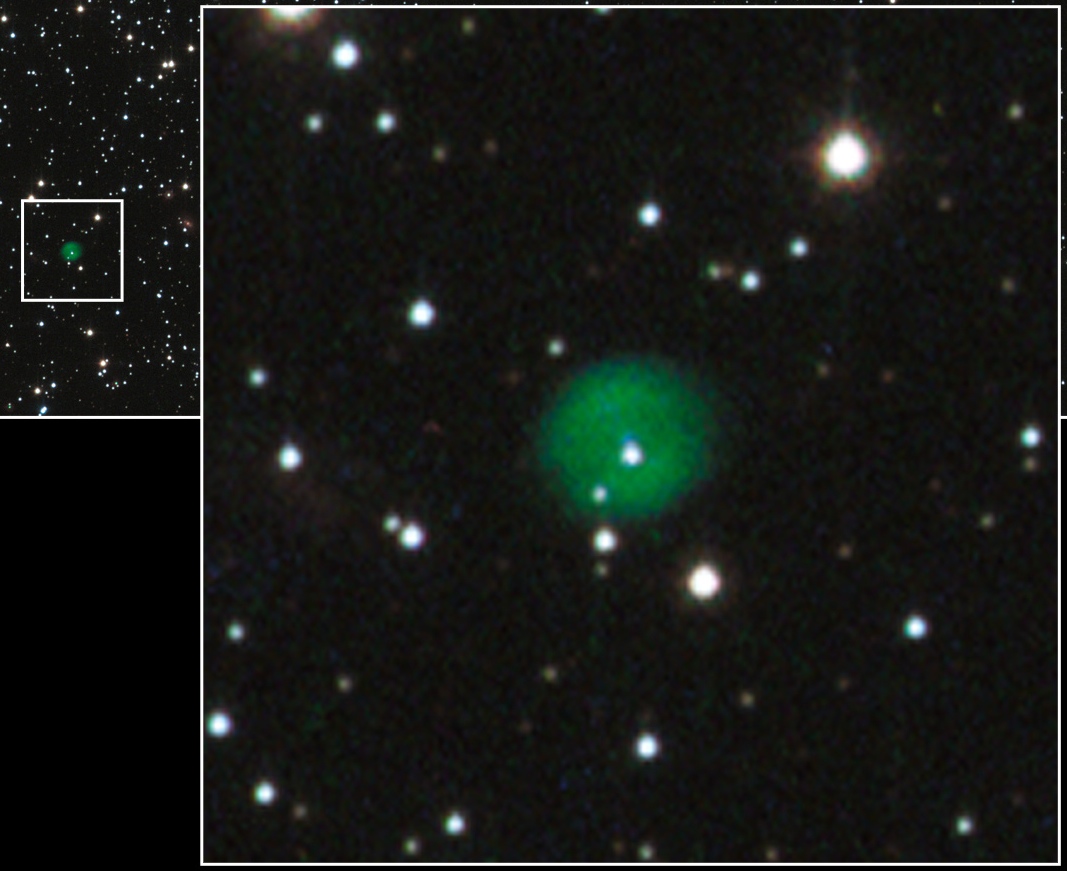Why the remains of stars are green
One touch of nature makes the whole world akin
- William Shakespeare
In January 2006, the Space Telescope. Equipped with the greatest telescope camera ever created, Hubble received this detailed image of the globular cluster NGC 1846 .

Click
Like most globular clusters, it is a dense group of several hundred thousand stars, located in an approximately spherical region the size of just a few light years. But unlike most clusters known to us, it is located not in our galaxy, but 160,000 light-years away, on the outskirts of the Large Magellanic Cloud .
And, like all familiar clusters, it contains stars of a large assortment of permissible colors: from hot blue stars to cooler yellow, orange, and the coldest, red. But if you take a closer look, you will see something that should surprise you a lot: a green object.
')

And this should alert you, because green stars do not exist ! And although astronomical objects are often given false colors to increase the contrast and their visibility, this is not the case - the object is really green.
What is going on? Believe it or not, if you want to understand this, we need to first fly around the Earth.
In the video you will notice cities, clouds, oceans, continents - and sometimes beautiful northern lights. But pay attention to the atmosphere on the horizon in those moments when there is no shine. You will see a greenish haze (with a slight admixture of red), known as the own glow of the atmosphere .

What is its cause? It turns out that the cooling of oxygen atoms on the night side of the planet. With the ISS, the atmosphere looked like this during the return of the last space shuttle Atlantis to Earth.

How does the cooling oxygen do it? Like all atoms and molecules, oxygen has a large set of energy levels at which electrons can live. When ultraviolet from the sun collides with oxygen atoms, some photons are just the right wavelength to excite electrons and raise them to higher levels, and sometimes even partially ionize the atoms.
But when the ultraviolet source disappears at night, eclipsed by the Earth, the excited electrons descend through the allowed energy levels and emit a large set of photons with certain wavelengths.

You must have heard about this physical process, even if you did not recognize it by its description: fluorescence . For each atom or oxygen molecule in the Universe, these wavelengths are the same, because all of them are determined by the laws of quantum physics.
And what does the emission spectrum of oxygen look like?

In atomic oxygen that absorbs ultraviolet, the strongest radiation occurs at a wavelength of 558 nm - the high green line on the graph.
And, of course, it is not by chance that green “halos” occurring around dying or recently deceased stars that sometimes occur to us in planetary nebulae are just such a wavelength. Look at NGC 7009 .

Various other colors are also encountered, since oxygen is not the only element present in planetary nebulae. But when there is a lot of it, its green glow cannot be confused with anything, as can be seen from the image of NGC 6826 .

Of course, not all planetary nebulae have such strong signs of oxygen. Someone does not have them, like the Ring Nebula (left), and someone has them, like the Dumbbell Nebula, on the right, which has a mixture of oxygen and hydrogen.

So, seeing such a green glow coming from an object that looks like a scattered star, you will know what it is. This is not a star, it is oxygen, dropped from the outer layers of a star, similar to our Sun, and burned its last fuel. The ultraviolet light penetrating the nebula excites electrons in the oxygen atoms, and when they return to their normal state, they emit this green glow in the process of fluorescence.

This is what we observe from a distance of 160,000 light years. Enjoy the bright green glow that appeared outside of our galaxy, and know that someday, in the distant future, our Sun will look very similar. Green color immediately indicates that this is not a star; oxygen halo says that it was once a star.
Source: https://habr.com/ru/post/400453/
All Articles